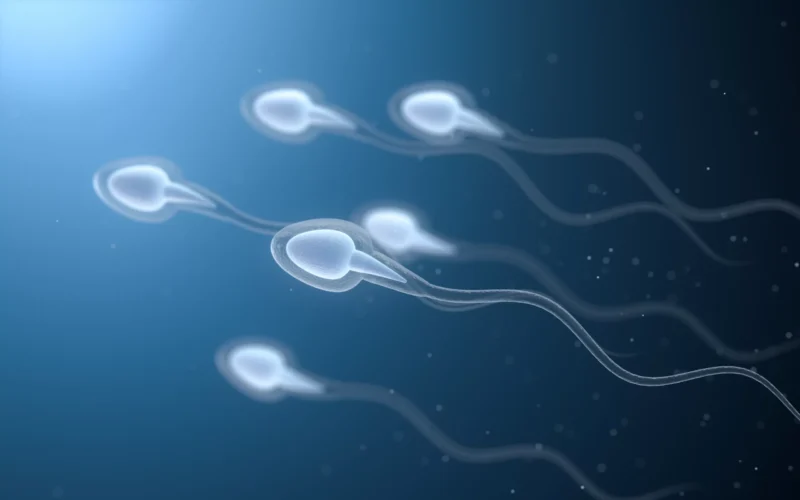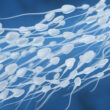In a separate article, I covered the debate on whether worldwide decreasing sperm counts are cause for concern as they pertain to male—and consequently a couple’s—fertility. I explained how male infertility is defined and what causes it, including lifestyle choice-related causes that are, to some extent, within a man’s control. Here, I’ll summarize treatment options for male infertility, highlighting more natural and less invasive ones in addition to covering surgical and other more aggressive medical options.
Conventional treatment options for male infertility
Because male infertility can be linked to a host of causes, the treatment options vary based on the diagnosis. A urologist specializing in fertility issues can discuss these options with a couple seeking help for male infertility. Unfortunately, conventional treatments suggested on most medical websites range either from invasive procedures like surgery, to “band-aid” options that may overcome infertility in the short-term, but do not offer a life-long solution, such as in vitro fertilization (IVF), intracytoplasmic sperm injection (ICSI, basically a more precise version of IVF), and artificial insemination. Certainly, surgery can be helpful if a blockage or physical abnormality such as a varicocele is the root cause of poor sperm production or blocked transport, as Natural Womanhood’s Grace Emily Stark covered in detail here.
Sadly, anything suggested under “lifestyle modification” for male infertility is often a short blurb merely mentioning that eliminating certain medical or environmental factors could improve fertility. Even the National Institute of Child Health and Human Development (NICHD), while acknowledging that there are “evidence-based treatments” for male infertility when there is “no identified problem,” does not actually list any of those treatments, but instead reads:
“Treatments include surgery to correct or repair anatomic abnormalities or damage to reproductive organs, use of medical procedures to deliver sperm to the woman, fertilization of the egg in a laboratory, and using a third party for donating sperm or eggs and/or carrying a pregnancy.“3
Reading this, it doesn’t seem that there are many choices for those seeking options other than surgery, injections, IVF, and even surrogate pregnancies, as suggested above. And entering “natural treatments for male fertility” on a web search opens up a whole new world of old wives’ tales and questionable remedies, like this one suggesting eating garlic every day. While it’s possible that there could be something to the “folksier” cures out there, we’ll focus now on some of the least-invasive (or more “natural”) approaches to improving fertility that have at least some scientific research to back them up. (Of course, if a blockage or congenital abnormality is truly the cause of infertility, surgery may be your best option. Even if this is the case, but most especially if the exact cause of male infertility hasn’t been defined, some of the information below may be relevant.)
Natural male infertility treatment options
Cell phone usage
How often do you carry your cell phone in your pocket, close to the lower half of your body (i.e., the area where your fertile organs are)? In a comparative study of 360 men attending an infertility clinic, scientists discovered that daily cell phone exposure decreased their sperm count, forward movement, viability, and shape [1].
Now, these men were already attending an infertility clinic, so perhaps they had underlying issues which caused them to be more sensitive to the cell phone’s radiofrequency electromagnetic waves. But it’s also worth noting that this was an older study published in 2008–consider how much higher our phone use is today than it was 15 years ago!
Finally, while this review acknowledges that some studies do not conclusively show any connection between cell phone usage and decreased fertility–since the cell phone has become so essential in our lives, it is hard to find someone not frequently exposed–it also points to evidence from several recent studies suggesting that cell phones may have more of an effect on our fertility than we think [2].
Keep it cool: be mindful of your body temperature
Sperm production thrives in a delicately balanced environment. In fact, the physical design of the testes, scrotum, and pelvis all contribute to keeping the temperature of the testes about 3 degrees below the core body temperature. Thus, a sedentary lifestyle, such as a desk job, without sufficient breaks and movement can raise the temperature of the groin area. Likewise, certain occupations like baking, firefighting, and welding necessarily involve repeated exposure to high temperatures.
Other lifestyle choices like exercising outside in the heat, and even wearing briefs instead of boxers, can contribute to overheating of the testes and (potentially) to reduced sperm production. To maintain the temperature necessary for prime fertility, consider adding in swimming for exercise, swapping briefs for boxers, or taking more frequent stretch breaks at work.
Mind your matter: maintain a healthy weight
Obesity can affect both sperm quality and quantity. Obesity affects male sexual hormones such as testosterone, which in turn affects sperm production. Excess weight may also increase the temperature of the testes, which can be detrimental, as we’ve already discussed.
Weight loss increases the levels of sex hormones, such as testosterone, significantly [3]. But being underweight can have its issues, too, especially if it’s due to excessive exercise. Intense physical training increases oxidative stress on the body, which can in turn damage sperm [4].
Up antioxidant intake for improved sperm quality
Speaking of oxidative stress, you may have heard that red wine and dark chocolate are good for you, or that goji berries are a superfood. The reason? They all contain high levels of antioxidants, compounds that fight against unstable molecules called free radicals which cause DNA damage, cell damage, and sperm damage in the body.
While more research is needed, this systematic review found that 82% of studies using antioxidant therapy to treat infertility found improved sperm quality or pregnancy rate [5]. Sources of antioxidants in these studies were oral supplements, such as Vitamins C and E, folate, selenium, and zinc. Other good sources of antioxidants are vegetables such as broccoli, brussels sprouts, sweet potatoes, and leafy greens, fruits such as apples, grapes, avocado, and strawberries, and some protein sources like eggs, beef, and Brazil nuts. Consuming antioxidants from food rather than supplements is generally thought to be better since foods naturally contain other nutrients that work with antioxidants for optimal absorption.
Vitamins and supplement use should augment good nutrition
The same foods mentioned above also contain many other vitamins essential for fertility, such as B vitamins and Vitamin A. A good multivitamin is a great start for getting the right essential vitamins and nutrients, and is a worthwhile first step in the journey of fertility since it’s cheaper and more accessible than conventional fertility treatments. Ms. Marilyn Shannon, author of Fertility, Cycles, and Nutrition, points this out:
Considering the extent of subfertility on a worldwide basis and the stress it places on couples desiring a child, it seems prudent to at least consider multivitamin supplementation as an early and essential broad-based therapeutic intervention for both males and females (Shannon 286).
Coenzyme Q10 (CoQ10), an antioxidant and a molecule that releases energy, is a powerful source for sperm particularly, since sperm need a good deal of energy to be mobile. In a study conducted over a year on 287 infertile men and their wives, sperm quality and quantity improved
with CoQ10 given as a twice-daily supplement and 1/3 of the couples achieved pregnancy naturally [6]. Organ meats (beef, chicken or other animal liver, heart, intestines, etc.) are high in CoQ10, but studies suggest that diet alone does not provide sufficient amounts of CoQ10 to benefit men’s fertility.
Optimize your diet overall
But again, vitamins and supplements should do just that—supplement our nutritional intake from whole (naturally occurring and unprocessed) food sources. Eating a diet high in whole foods, fish, fruits, and vegetables can provide many of the vitamins often lacking in our “Western” diet. In fact, the Rochester Young Men’s Study found that men who ate a so-called “prudent” diet of beans, whole grains, fruits and vegetables, chicken, and fish, had much better sperm motility than other men who ate a “Western” diet consisting of a large number of processed foods [7].
Sperm cells contain unsaturated fatty acids, and in a higher number than many other cells in the body. Fatty acids, such as DHA and EPA, are thus essential to sperm health, especially the omega-3 essential fatty acid, alpha-linolenic acid (ALA). Good sources of these fatty acids are flax oil and walnuts–in fact, when a mere half cup of walnuts was given to a group of young men every day for three months, researchers found incredible improvement in sperm quality, motility, and morphology, even though these men were also eating a diet high in processed foods [8]! Antioxidants–vitamin C, vitamin E, zinc etc.–are needed to help convert the ALA into fatty acids.
Another remarkable source of nutrition for male fertility is fish. Fish consumption among men at a fertility clinic was correlated with higher sperm count and improved morphology, especially in comparison to those who ate processed red meat [9].
Utilize fertility-focused intercourse and consult a RRM provider
In couples trying to achieve pregnancy, fertility-focused intercourse may be enough to successfully conceive. This means that the woman would chart her cycles, identify her fertile window, and the couple would specifically target that window for intercourse. Several examples of successful conception using the Creighton Method of natural family planning, even when the male had quantifiably low sperm counts, are described here. And while NaProTechnology medical consultants and other restorative reproductive medicine (RRM) providers offer the most options for female infertility, several websites for NaProTechnology practitioners helpfully note that:
Men with very low sperm counts or anti-sperm antibodies can be treated. Often, improvements in semen quality can be made by healthy lifestyle changes. A number of medical and surgical treatments can also improve semen quality and sperm function….The overall success rate for male factor infertility is around 40%.
Note: There are numerous, small ways to try to improve fertility beyond those listed above. For a full analysis of scientific studies and anecdotal evidence regarding male fertility, check out Fertility, Cycles & Nutrition by Marilyn M. Shannon.
The takeaway: start small
Some of the improvements above are small, simple steps which anybody can implement, such as taking a good multivitamin. Making changes in diet, lifestyle, nutrition, and habits are all achievable, and may save couples the heartache and financial expense of infertility treatments with low success rates, especially for women over the age of 40. Men’s fertility and its potential impact ought to be further studied, embraced, and honored as much as women’s fertility. Our husbands, fathers, and sons are worth it.
References:
[1] Agarwal, Ashok et al. “Effect of cell phone usage on semen analysis in men attending infertility clinic: an observational study.” Fertility and sterility vol. 89,1 (2008): 124-8. doi:10.1016/j.fertnstert.2007.01.166 [2] Agarwal, Ashok et al. “Cell phones and male infertility: a review of recent innovations in technology and consequences.” International braz j urol : official journal of the Brazilian Society of Urology vol. 37,4 (2011): 432-54. doi:10.1590/s1677-55382011000400002 [3] Kaukau J, et al. “Sex hormones and sexual function in men losing weight.” Obesity vol. 11, iss. 6 (2003): 689-94. https://doi.org/10.1038/oby.2003.98 [4] Tremellen, Kelton. “Oxidative stress and male infertility–a clinical perspective.” Human reproduction update vol. 14,3 (2008): 243-58. doi:10.1093/humupd/dmn004 [5] Ross, C et al. “A systematic review of the effect of oral antioxidants on male infertility.” Reproductive biomedicine online vol. 20,6 (2010): 711-23. doi:10.1016/j.rbmo.2010.03.008 [6] Safarinejad, Mohammad Reza. “The effect of coenzyme Q₁₀ supplementation on partner pregnancy rate in infertile men with idiopathic oligoasthenoteratozoospermia: an open-label prospective study.” International urology and nephrology vol. 44,3 (2012): 689-700. doi:10.1007/s11255-011-0081-0 [7] Gaskins, Audrey J et al. “Dietary patterns and semen quality in young men.” Human reproduction (Oxford, England) vol. 27,10 (2012): 2899-907. doi:10.1093/humrep/des298 [8] Robbins, Wendie A et al. “Walnuts improve semen quality in men consuming a Western-style diet: randomized control dietary intervention trial.” Biology of reproduction vol. 87,4 101. 25 Oct. 2012, doi:10.1095/biolreprod.112.101634 [9] Afeiche, Myriam C et al. “Processed meat intake is unfavorably and fish intake favorably associated with semen quality indicators among men attending a fertility clinic.” The Journal of nutrition vol. 144,7 (2014): 1091-8. doi:10.3945/jn.113.190173Additional Reading:
How FAM can help a couple with male infertility to conceive
Why we really need better options for treating male infertility
The affordable, effective alternative to IVF no one talks about











